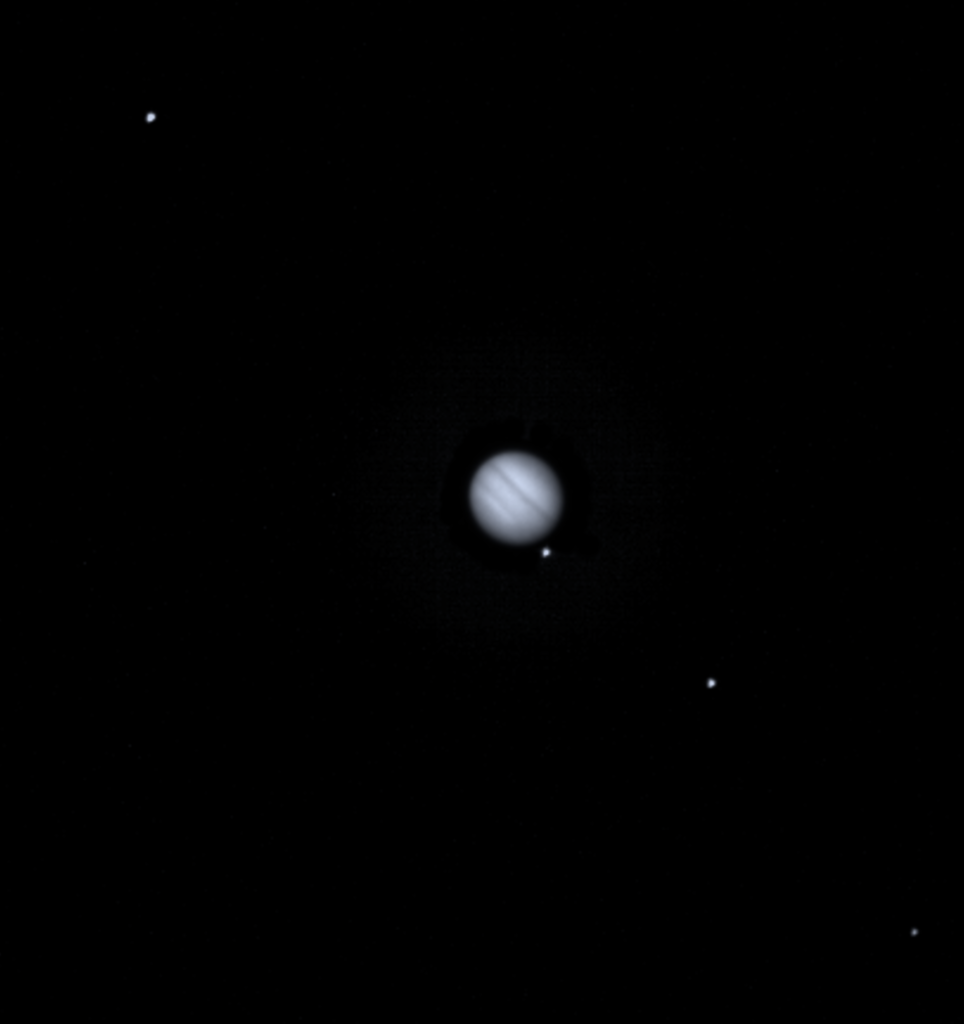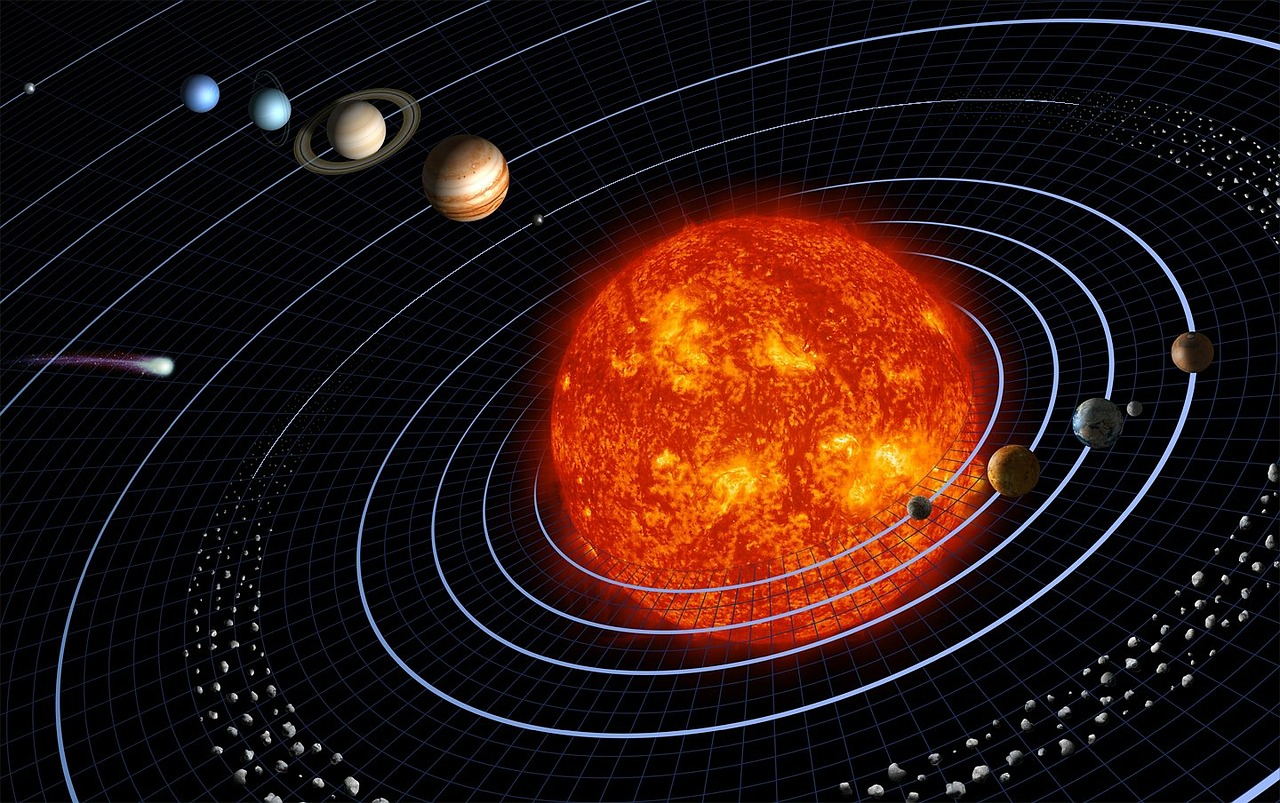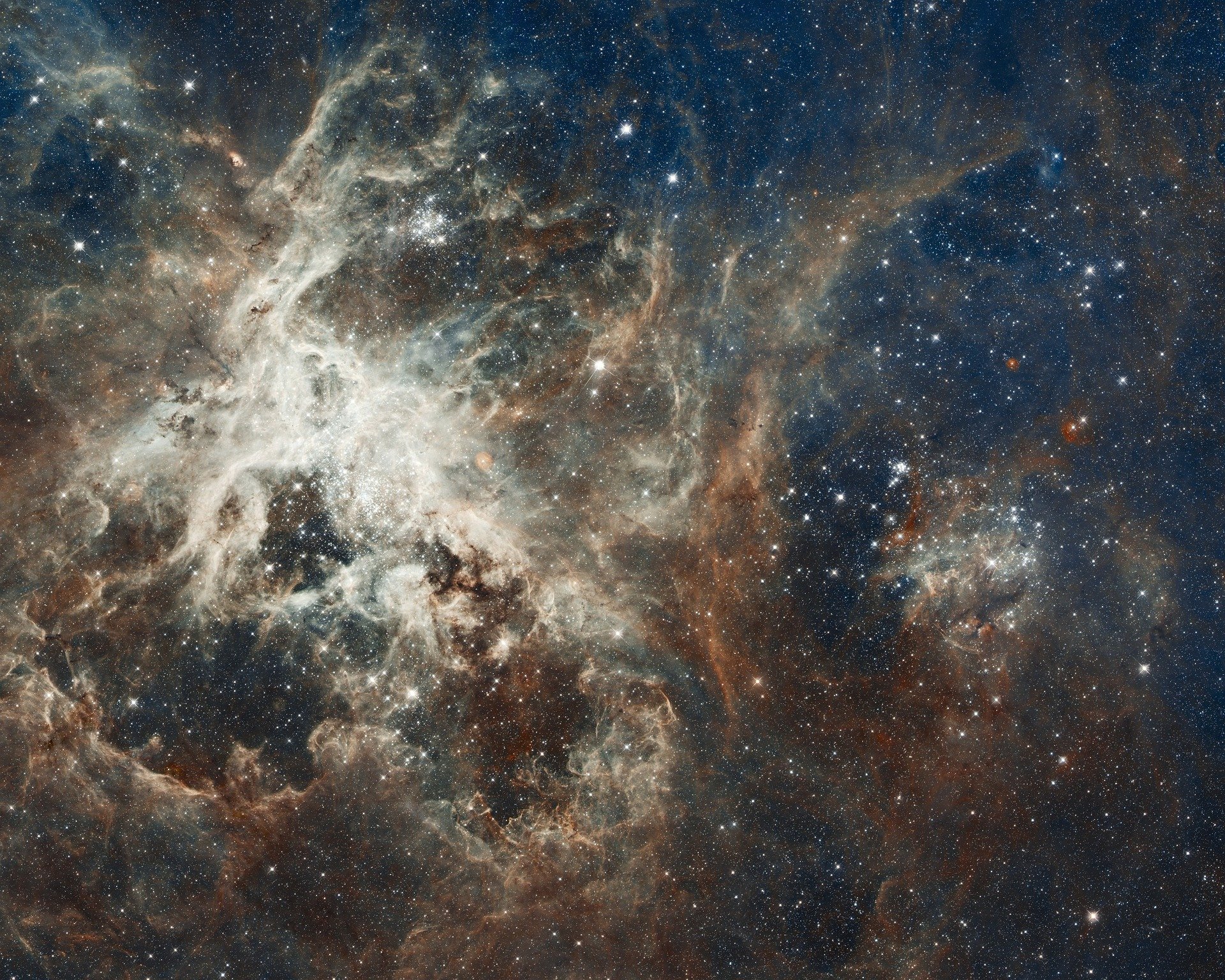DART captures brilliant spectacle of Jupiter and its four largest moons

The world’s first planetary defense test mission, NASA’s Double Asteroid Redirection Test (DART), has captured a brilliant spectacle of Jupiter and its four largest moons.
DART is missioned for a kinetic impact on Dimorphos, the close companion of a 2,500-foot (780-meter) asteroid named Didymos. NASA targets the asteroid system, floating about 7 million miles (9.6 million kilometers) from Earth, to slightly change its motion in space, hitting with DART.
As DART nears its highly anticipated encounter with the binary asteroid Didymos on September 26, its imager — the Didymos Reconnaissance and Asteroid Camera for Optical Navigation, or DRACO — has snapped thousands of images of stars. The pictures offer additional data to the Johns Hopkins Applied Physics Laboratory (APL) team, which is leading the mission for NASA, to support ongoing spacecraft testing and rehearsals in preparation for the spacecraft’s kinetic impact into Dimorphos, Didymos’ moon.
DRACO, the spacecraft’s only instrument, will capture images of Didymos and Dimorphos while also aiding the spacecraft’s autonomous guidance system, the Small-body Maneuvering Autonomous Real Time Navigation (SMART Nav), in directing DART to impact.
The DRACO imager was pointed at Jupiter on July 1 and August 2 in order to test the SMART Nav system. In a similar manner to how the smaller asteroid Dimorphos will visually emerge from the larger asteroid Didymos in the hours before impact, the team employed it to detect and target Jupiter’s moon Europa as it emerged from behind Jupiter. Despite the fact that the test certainly did not include DART colliding into Jupiter or any of its moons, it did provide the APL-led SMART Nav team with the chance to assess how well the SMART Nav system works in flight. Prior to this test on Jupiter, simulations on the ground were utilized to test SMART Nav.
The test provided the SMART Nav team with useful insight into how they analyze data from spacecraft, among other things. According to Peter Ericksen, SMART Nav software developer at APL, “every time we run one of these tests, we alter the displays, make them a little bit better and a little bit more responsive to what we will actually be looking for during the real terminal event.”
The SMART Nav team will be monitoring how things are tracked in the scene, including their intensities, numbers of pixels, and how consistently they are being identified. The DART spacecraft is designed to function autonomously during the terminal approach. Only if there are serious and mission-threatening deviations from expectations will corrective action using preplanned contingencies be undertaken. The researchers got the opportunity to learn more about how object intensities and pixel counts may alter as targets move across the detector by studying Jupiter and its moons.
The image below is a cropped composite of a DRACO image centered on Jupiter, taken during one of these SMART Nav tests, when DART was about 16 million miles (26 million km) from Earth and Jupiter was around 435 million miles (700 million km) away from the spacecraft. This image was created by merging two brightness and contrast stretches that were designed to maximize Jupiter and its moons, respectively. Jupiter, Europa, Io, Ganymede, and Callisto are arranged from left to right.
DRACO image centered on Jupiter taken during one of SMART Nav’s tests

Credits: NASA/Johns Hopkins APL
According to Carolyn Ernst, DRACO instrument scientist at APL, the Jupiter tests gave astrononmers the opportunity for DRACO to image something in our own solar system. “The images look fantastic, and we are excited about what DRACO will reveal about Didymos and Dimorphos in the hours and minutes leading up to impact,” added Ernst.
The imager aboard NASA’s New Horizons spacecraft, which provided the first up-close views of the Pluto system and of the Kuiper Belt object Arrokoth, provided the idea for the high-resolution camera known as DRACO.
APL designed and manages DART on behalf of NASA’s Planetary Defense Coordination Office. DART, the first planetary defense test mission ever, intentionally impacts Dimorphos in order to slightly affect its motion in space. Although there are no known asteroids that pose a threat to Earth, the DART mission will show that a spacecraft is capable of autonomously navigating to a kinetic impact on a relatively small target asteroid and that this is a practical way to deflect a genuinely dangerous asteroids, should one ever be discovered. The DART mission will arrive on September 26, 2022.
For more information about the DART mission, click here.
Auto Amazon Links: No products found.


